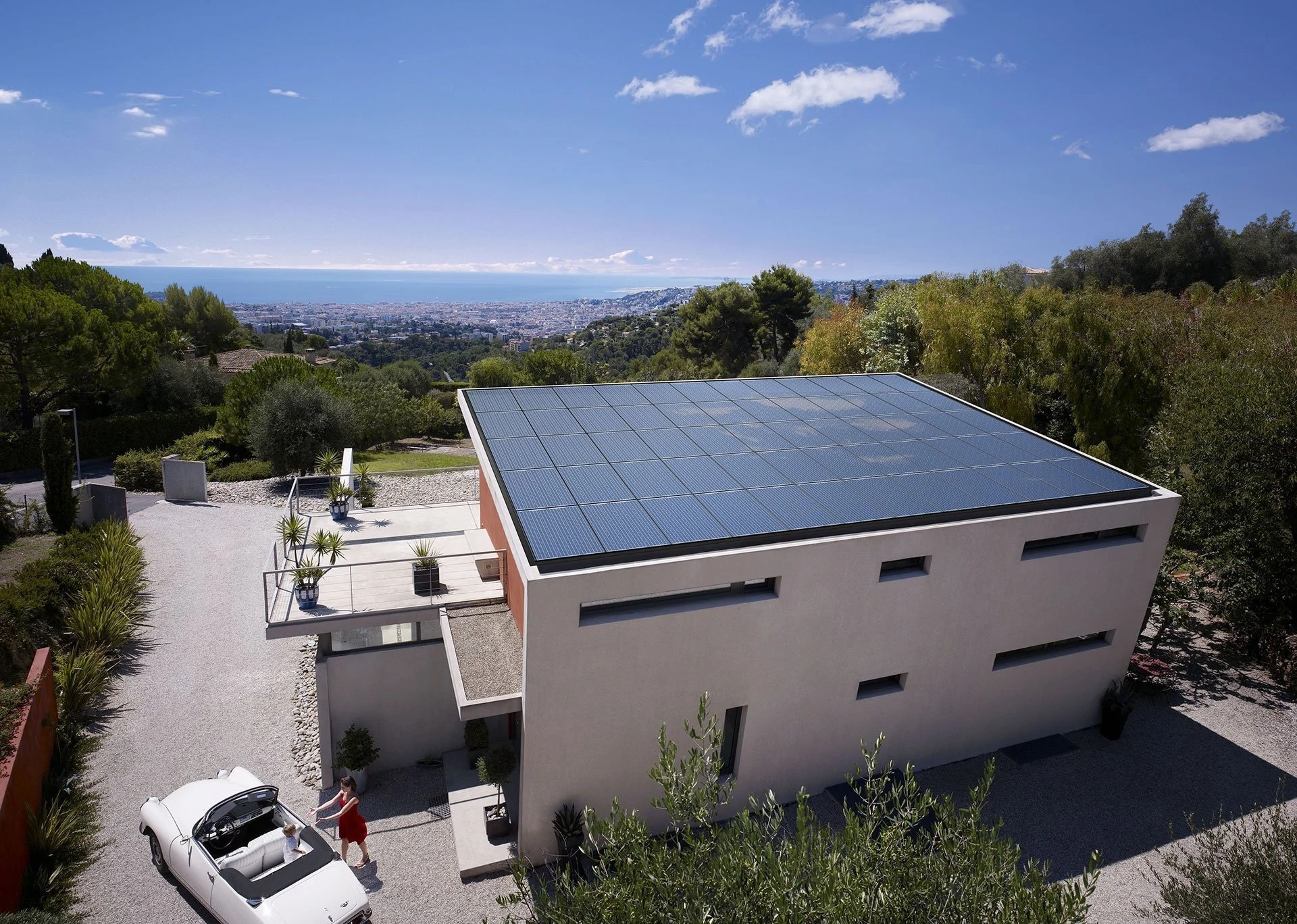
More common than ever, companies will advertise solar packages with what appears to be a mismatched product pairing. A combined quantity of panels, such as a 6.6 kW solar array feeding and a 5 kW inverter should defy electrical good health. However, beyond being one of the most efficient approaches to driving a solar inverter, there is more than one advantage when oversizing solar arrays to their respective inverters.
Contents
Many leading solar inverter manufacturers, such as SMA and Fronius, suggest that if remaining within the rated voltage and current input ratings of the inverter, oversizing a solar array into an inverter by up to 50% is the best way to maximise your solar energy yield.
In light of this, even though peak power production will be clipped at the inverter’s output capacity, the overall kWh generated throughout the day will be increased through the broadening of the solar production window.

Maximum energy
Solar inverters are more efficient when they operate at peak output power. That’s the consensus. However, the modern-day maximising of production is often based around particular grid or feed-in tariff limitations.
Western Power (in Western Australia), the network operator, limits the implementation of single-phase solar inverter capacity to no greater than than 5 kW maximum output. Three-phase solar inverter capacities greater than 5 kW are export limited via the integration of an inverter connected energy meter to no more than 1.5 kW per phase.
Similarly, solar inverter capacities that exceed 5 kW output capacity are excluded from Synergy’s Distributed Energy Buyback Scheme (feed-in tariff ) of 2.5c per unit (kWh) off-peak and 10c per unit (kWh) peak when exported to the grid.
Discover the savings. The latest Perth Solar Warehouse catalogue delivered to your inbox.
How much can you oversize
In theory, as much as possible, ensuring the input voltage and current ratings of the solar inverter are not exceeded. Beyond such, alternative external limitations set by national (Australia) and local regulatory authorities are in place to also limit your ability to oversize solar inverters in general.
The simple calculation that applies in all instances, without a battery, to be eligible for Small Technology Certificates (STCs – also referred to as the subsidy) on a solar energy system in Australia is as follows: Solar inverter output capacity multiplied by 1.33 or 33%.
1.33, the magic number
Without a battery, 1.33 or 33% greater than a solar inverters rated output has been determined by the powers that be in Australia, as an acceptable oversizing increment without being detrimental to a solar energy systems ability to offset carbon emissions.
Remember, your ability to claim a subsidy (STCs) on the upfront purchase price of a solar photovoltaic system is based on its ability to offset carbon emissions now and into the future. Disregard the 1.33 value if adding a DC-Coupled battery.
Oversizing simplified
Forget the equations. You need to know the most you can oversize your particular solar inverter capacity. Below are the most common instances to oversize solar inverters and their maximum input capacity which apply to STCs (Small Technology Certificates) – your subsidy:
Inverter size | Max. Solar Array Oversizing |
|---|---|
3 kW | 3.9 kW |
5 kW | 6.6 kW |
8 kW | 10.6 kW (9.9 kW due to design limitations) |
10 kW | 13.3 kW |
15 kW | 19.9 kW |
When network limitations are set by inverter output capacity, oversizing solar panels to an inverter is the best way to maximise generation capacity towards overall kWh.
Satisfy your curiosity. An astute energy investor deserves a competitive solution.
Oversizing without a battery
The most common system combination where the oversizing of solar panels to an inverter occurs is 6.6 kW of solar panels on a 5 kW inverter. This is because residential Synergy customers in Western Australia who install an inverter capacity greater than 5 kW will forfeit the ability to qualify for the Distributed Energy Buyback Scheme or DEBS (commonly referred to as Synergy solar feed-in tariff).
Therefore, the best way to achieve greater overall power production (yield) without increasing solar inverter capacity is to oversize a solar array to the maximum allowable input capacity of an inverter while remaining eligible for STCs. Additionally, single-phase solar supplies connected to the Western Power network are currently limited to a maximum of 5 kW output to mitigate the effects of phase imbalance.
Common systems where the solar array input oversizes the solar inverter output with no detriment to manufacturer warranty:
- Systems compatible with customers who meet the criteria for the Distributed Energy Buyback Scheme (DEBS) Learn more.
- Average cost per kW installed after STC zone 3 subsidy applied as a point-of-sale discount, relevance within 30 days of the article post date.
Even with an increased average cost per kW between a 3.9 kW and 6.6 kW solar energy system (due to the way the STC subsidy offsets a system cost), there are still scenarios where an oversized solar array of 3.9 kW combined panel output on a 3 kW inverter may take preference.
- Areas with stringent electricity grid limitations.
- A desire for superior technology product options (higher cost per watt).
- Rooftops with limited available space.
Certain network limitations can exist around 3-phase 10 kW inverter capacities, enforcing a maximum 10 kW output capacity. However, the popularity of the 10 kW inverter range by most inverter manufacturers ensures an enticing and reduced capital outlay as opposed to selecting a 12 kW or 15 kW inverter capacity while generating almost the same overall yield.
As the popularity of 13.3 kW solar arrays oversized on 10 kW inverter capacities increases, so does the level of network restrictions. To mitigate the effect of excess energy on the network, network operators (such as Western Power) stipulate the requirement for inverter connected power sensing equipment at the point of supply.
Power sensors (inverter connected energy meters), when programmed per local requirements, limit a solar energy systems grid export ability to no more than 1.5 kW per phase. A popular reduced format of the 13.3 kW system design, where alternative limitations may exist, is 10.6 kW or 9.9 kW of solar panels oversized on an 8 kW inverter.

Oversizing with a battery
With a DC-coupled battery is where oversizing solar arrays become interesting. Forget the 1.33 rule and broaden your horizon to inverter manufacturer-nominated input limitations as your ability to offset carbon emissions has increased as deemed by Australia’s Clean Energy Regulator. Therefore, the ability to claim STCs on additional solar array capacity becomes available.
With broadening limitations, system configurations must be assessed on an individual basis when oversizing solar arrays on inverters with a DC-coupled battery. In such a scenario, contacting Perth Solar Warehouse sales support can assist in maximising the generation potential of your energy system. However, there are some basics to consider;
- The combined solar array voltage should be suitably less than the inverter input voltage rating per MPPT.
- The combined solar array current should be suitably less than the inverter input current rating per MPPT.
- The input power doesn't exceed manufacturer-nominated values.
- The electrical characteristics of the solar array design remain in accordance with local regulations.
- Systems compatible with customers who meet the criteria for the Distributed Energy Buyback Scheme (DEBS) Learn more.
- Average cost per kW installed after STC zone 3 subsidy applied as a point-of-sale discount, relevance within 30 days of the article post date.
- Expected inverter availability for the nominated design configuration, 2023.
Even with an increased average cost per kW between a 3.9 kW and 6.6 kW solar energy system (due to the way the STC subsidy offsets a system cost), there are still scenarios where an oversized solar array of 3.9 kW combined panel output on a 3 kW inverter may take preference.
- In areas of stringent grid limitations.
- A desire for superior technology product options (higher cost per watt).
- Or rooftops with limited available space.
Certain network limitations can exist around 3-phase 10 kW inverter capacities, enforcing a maximum 10 kW output capacity. However, the popularity of the 10 kW inverter range by most inverter manufacturers ensures an enticing and reduced capital outlay as opposed to selecting a 12 kW or 15 kW inverter capacity while generating almost the same overall yield.
As the popularity of 13.3 kW solar arrays oversized on 10 kW inverter capacities increases, so does the level of network restrictions. To mitigate the effect of excess energy on the network, network operators (such as Western Power) stipulate the requirement for inverter connected power sensing equipment at the point of supply.
Power sensors (inverter connected energy meters), when programmed per local requirements, limit a solar energy systems grid export ability to no more than 1.5 kW per phase. A popular reduced format of the 13.3 kW system design, where alternative limitations may exist, is 10.6 kW or 9.9 kW of solar panels oversized on an 8 kW inverter.
No matter what limitations may be set, the benefits of solar, more often than not, outweigh no solar at all. Oversizing solar arrays on inverters to harness maximum yields is another step closer to ensuring your energy security. If you’re curious to see how solar array oversizing can work with your property, we can help.









